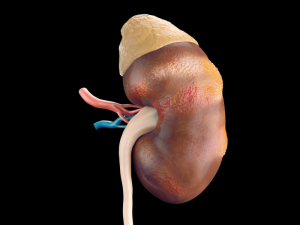por
John R. Fischer, Senior Reporter | August 29, 2017

PET, CT, ultrasound and MRI scans
indicate possible end to trending rise
in kidney cancer
The two-decade rise in the rate of kidney cancer in the U.S. might be coming to an end, according to the results of an MR, CT, PET and ultrasound study.
Researchers at the University of California Institute for Population Health Improvement say that a review of scans taken between 1988 and 2013 in California suggest a decrease and stabilization in recent years in the high rate of small tumors and early-stage kidney cancer. The study is the first to indicate the possibility that the increasing rate of kidney cancer cases throughout the country has stabilized and is at an end.
The findings, published in
Kidney Cancer, are based on records of 77,363 confirmed cases of diagnosed kidney cancer in California from 1988 through 2013.



Ad Statistics
Times Displayed: 41009
Times Visited: 663 Reveal Mobi Pro integrates the Reveal 35C detector with SpectralDR technology into a modern mobile X-ray solution. Mobi Pro allows for simultaneous acquisition of conventional & dual-energy images with a single exposure. Contact us for a demo at no cost.
Through their review, the authors found various trends in the rate of kidney cancer-related incidents and deaths. For example, incidents of renal cell carcinoma (RCC) increased by 1.5 percent annually between 1988 and 2000. The rate then rose to 4.8 percent annually and remained there until 2008 when it stabilized with findings based on 91 patients that underwent surgery for localized RCC between 1988 and 2013.
They also noted an increase in the use of various forms of imaging technology after 2004, with ultrasound doubling, CT tripling, MRs quadrupling and PET increasing tenfold. CT scans were especially well-documented with the annual growth rate at 14.3 percent between 2000 and 2005 before dropping to 7.1 percent in 2006 and 1.4 percent by 2009.
The rise in the use of these technologies can be attributed to clinical conditions and favorable economic reimbursements as well as wider availability, an increased demand for them among patients and medical liability concerns.
“Improvements in the technology resulted in ever-better images, allowing clinicians to better diagnose and treat conditions, often without doing the invasive procedures that were required in the preceding years,” said Dr. Kenneth W. Kizer, director of the Institute for Population Health Improvement and one of the authors of the study. “Doctors wanted to use the technologies because they were so often clinically helpful. Patients quickly learned of the technologies (especially CT and MR) and their potential benefits and started to demand the tests from their treating physicians.”
A rise in the use of partial nephrectomy for treating patients was also recorded from 6.3 percent in 1988 to 56 percent in 2013. Excluding tumors bigger than 4 cm, partial nephrectomy procedures showed a rate increase from 13.8 percent in 1988 to 74.6 percent in 2013.
Kizer says that the study will most likely lead to more investigations into this and other trends in the care of kidney cancer.
“I suspect our study will prompt other investigators to look into the matter, both with regard to trends in kidney cancer and ... to use of partial nephrectomy to treat localized small tumors,” he said.
Other findings and innovations have continued to assist in the treatment of kidney cancer. For instance, doctors at NYU Lutheran now offer
robot-assisted procedures to reduce the size of surgical incisions as well as recovery time. And a study by Mayo Clinic researchers found that
surgical procedures could more than double the life expectancy rate for patients in the late stages of kidney cancer.

